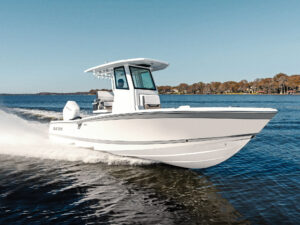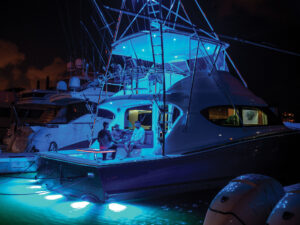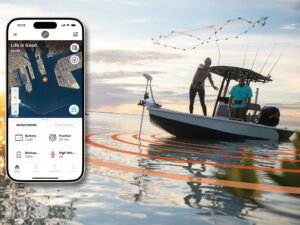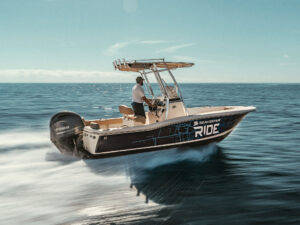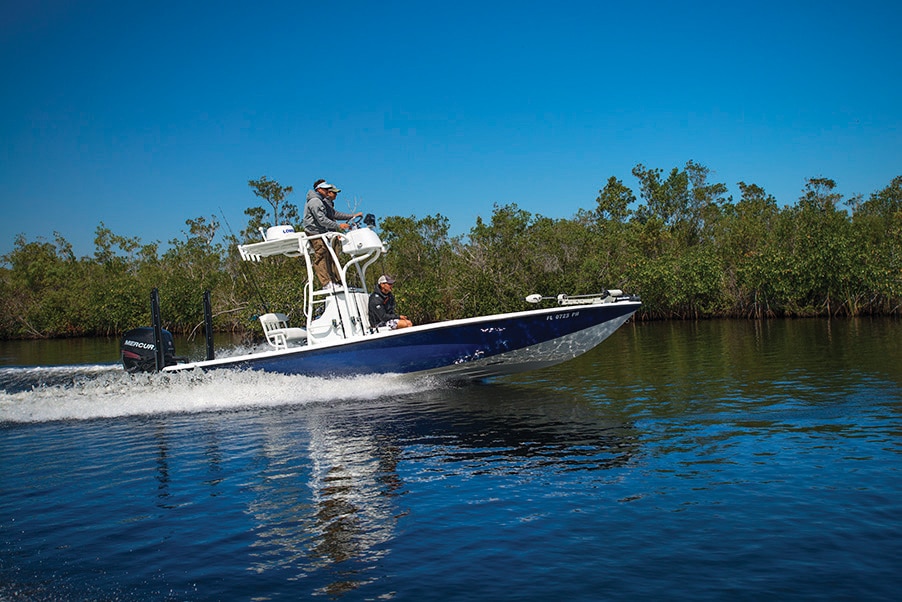
Zane Grey started the trend. The legendary angler and Western novelist was among the first to put a “crow’s nest” on his yacht to spot sunning swordfish off the California coast in the 1920s. The concept quickly evolved, and now it’s rare to see a blue-water convertible without a tuna or marlin tower rising high above the flying bridge. But as many owners of outboard-powered center consoles and cuddy cabins also have discovered, boat towers increase light-tackle and sight-fishing options for smaller craft too.
Scaled Down
“If you’re a dedicated fisherman, once you’ve had one, you’ll never go back,” says David Gore, co-owner of Gore Marine Metal Fabricators in Wilmington, North Carolina. In business with his brother Danny for 26 years, Gore says his primary boat tower customers are those who enjoy nearshore sight-fishing or trolling the Gulf Stream. He recently installed an observation tower over the console of a 24-foot Triton bay boat so the owner could locate cruising cobia.
“The additional height gives a different angle that really lets you see down into the water,” adds Kevin Meisman of Quality T-Tops in Tarpon Springs, Florida. “From a tower you can spot floating debris — like pallets and weed lines, which hold dolphin and other fish — from a greater distance. Plus, being up there gets the driver away from the cockpit when things are hectic during multiple hookups. That allows him to evaluate the situation and coordinate the activity like a traffic cop to successfully land the fish.”
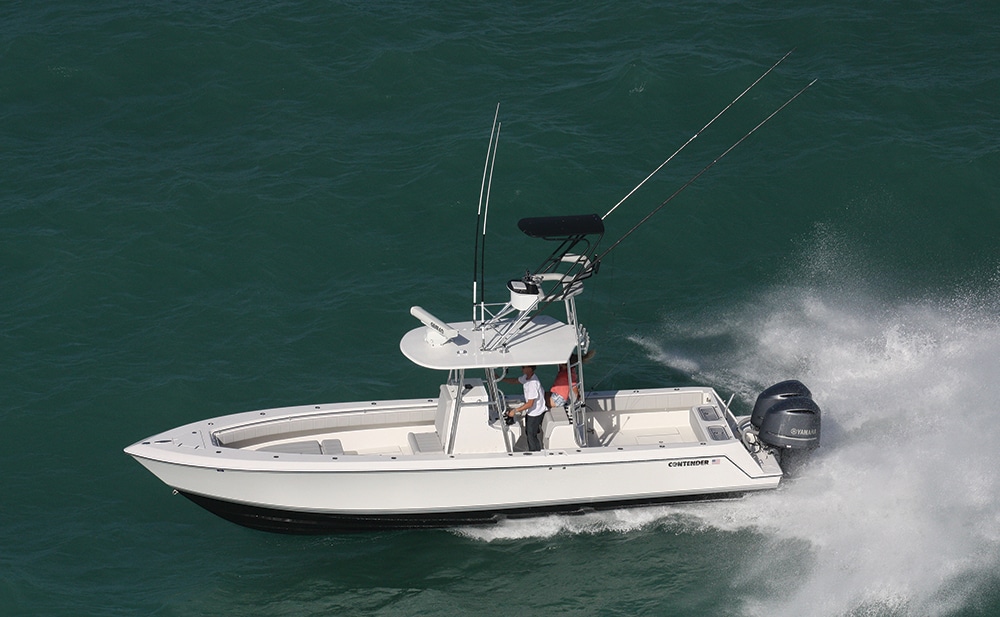
Wide Range
Tower options for small to midsize outboard boats run the gamut from a simple padded observation frame with the top of the console as the base, to a full tower with second-station controls, electronics, shade and rod storage. Prices start at $6,000 for a very basic boat tower with a hydraulic helm, and they go up from there, Meisman says.
“The sky is the limit, budgetwise,” he explains. “Each job can be customized to add whatever the owner wants. A simple, nonhinged tower frame alone will run $3,500 at a minimum. If you have a 36 Grady with triple outboards, and we do a custom fiberglass hardtop base, a full tower with electronic controls and helm, bolsters, rod holders, and a fiberglass buggy top, you would be looking at up to $40,000.”
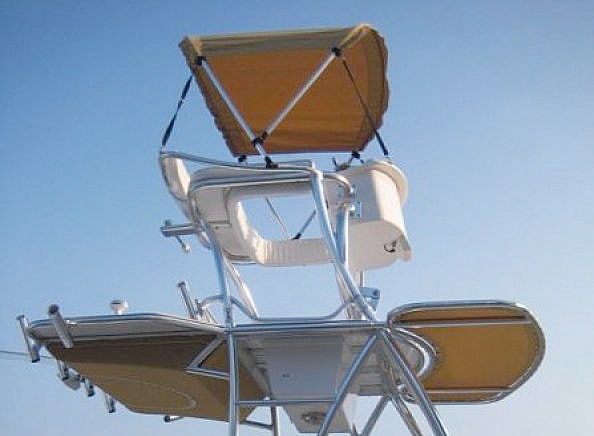
Legal Fit
Besides budgetary limitations, there are other important factors to consider when choosing a tower style. If you trailer your boat, overall height clearance is dictated by state highway laws. In Florida, for example, the standard limitation is 13 feet, 6 inches, so the dimensions of the hull sitting on top of the trailer must be factored in. Make sure it’ll clear the garage door or storage shed too. If you plan to leave the boat in the water, keep in mind low bridges between the slip and open water that would hinder passage.
“The standard height of our towers is usually seven feet high,” says Gore. “We don’t have as many low bridges here as they do in South Florida, although we still build hinged towers for boats that are trailered. On those we weld fittings into the aluminum pipes, which allow separation on demand with pinned joints. Ninety percent of the time, the towers fold aft into the cockpit so the radar antenna and other components are better protected.”
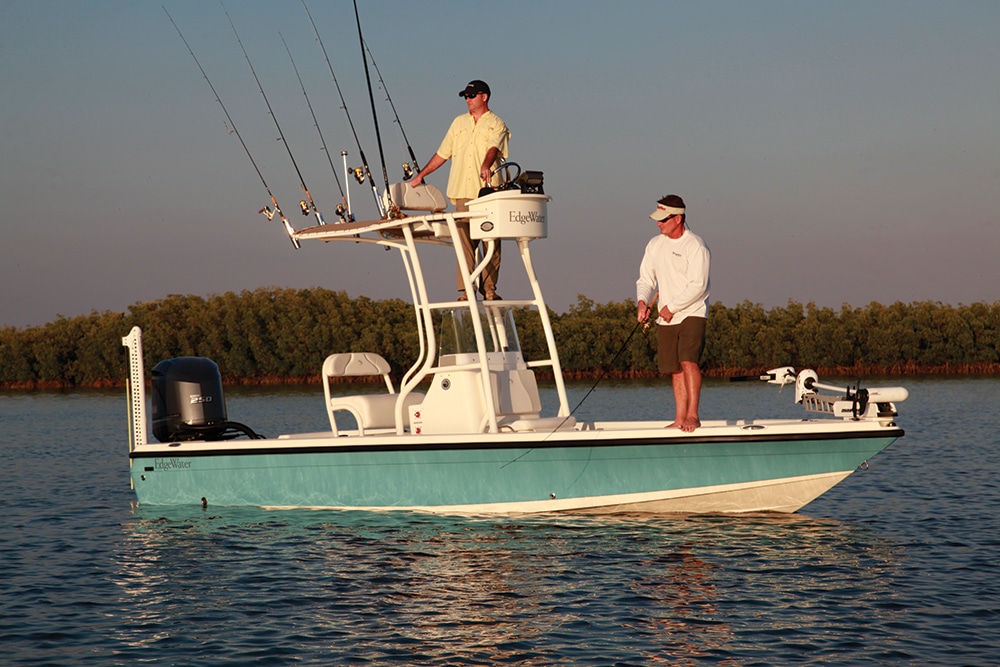
Critical Balance
Custom-fabrication shops like Gore Marine and Quality T-Tops often work with local dealers or builders to fabricate optional towers when selling a new boat or for individual owners as an aftermarket product. There are limitations though, especially on smaller or narrow-beamed models. If excess weight is added above the waterline, it might make the boat too top-heavy for optimal performance, or roll uncomfortably like a pendulum in heavy seas. Older boats that aren’t structurally sound aren’t good candidates either.
Custom Considerations
“A new boat isn’t the same as a seven-year-old boat with a spongy floor,” Meisman explains. “It depends on what you’re starting with.” Meisman says his company secures a tower with through-bolted backing plates in at least six anchor spots on the console, in addition to the deck pads.
“Before we start a job, we survey the boat to see where the leg pads will land to make sure the structure will be fully supported,” Gore says. “If it’s possible, we always use backing plates and through-bolts, even if that means redesigning the tower. But in the rare cases where we can’t get below-deck access, we use lag screws and add 3M 5200 or Sikaflex adhesive caulk to lock it down.”
For hinged boat towers with second-station controls, Gore and Meisman agree that cable steering should be avoided due to the likelihood of kinks. Hydraulic steering is a workable alternative, but the recommended option is electronic or fly-by-wire controls. The small-diameter control wires are easily routed, plus handling is responsive and dependable with backup safety features.
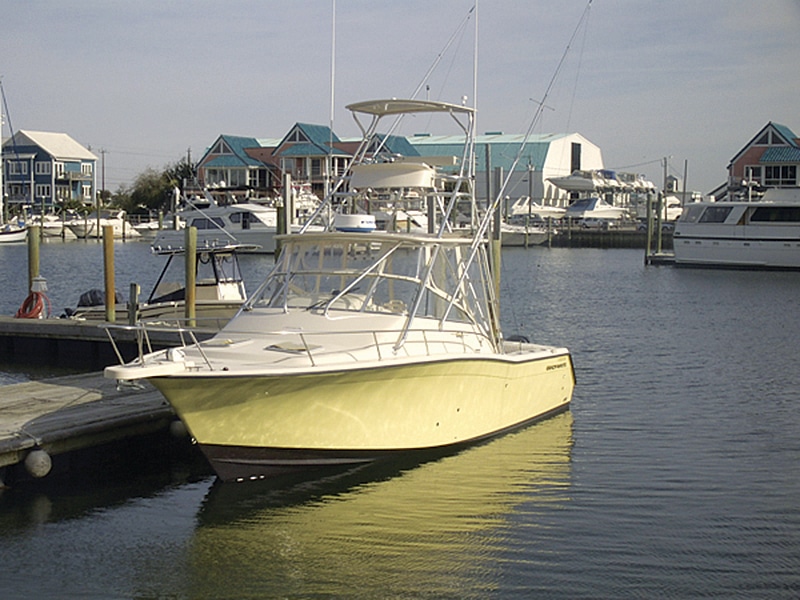
Maintenance Matters
“Pricewise, electronic controls cost more initially,” Gore says. “But for the reduced labor costs and easy operation afterward, there’s no comparison, especially with a retrofit. Everybody is going electronic now.”
Once a tower has been professionally installed, routine maintenance will keep it in good shape. If the helm, controls, and electronics are mounted properly to begin with and are covered when stored, they’ll be adequately protected against the elements. The tower’s aluminum framework should be washed with soap and water after each trip to remove salt. Meisman says a ceramic-aluminum coating that they have used recently is holding up well to corrosion.
Adding a tower to an outboard center-console or cuddy-cabin boat certainly isn’t an inexpensive option. But the first time you glance down from that vantage point and spot a 40-pound bull dolphin hiding under the sargassum, I’ll bet you’ll agree: Yes, it absolutely is worth every penny.

